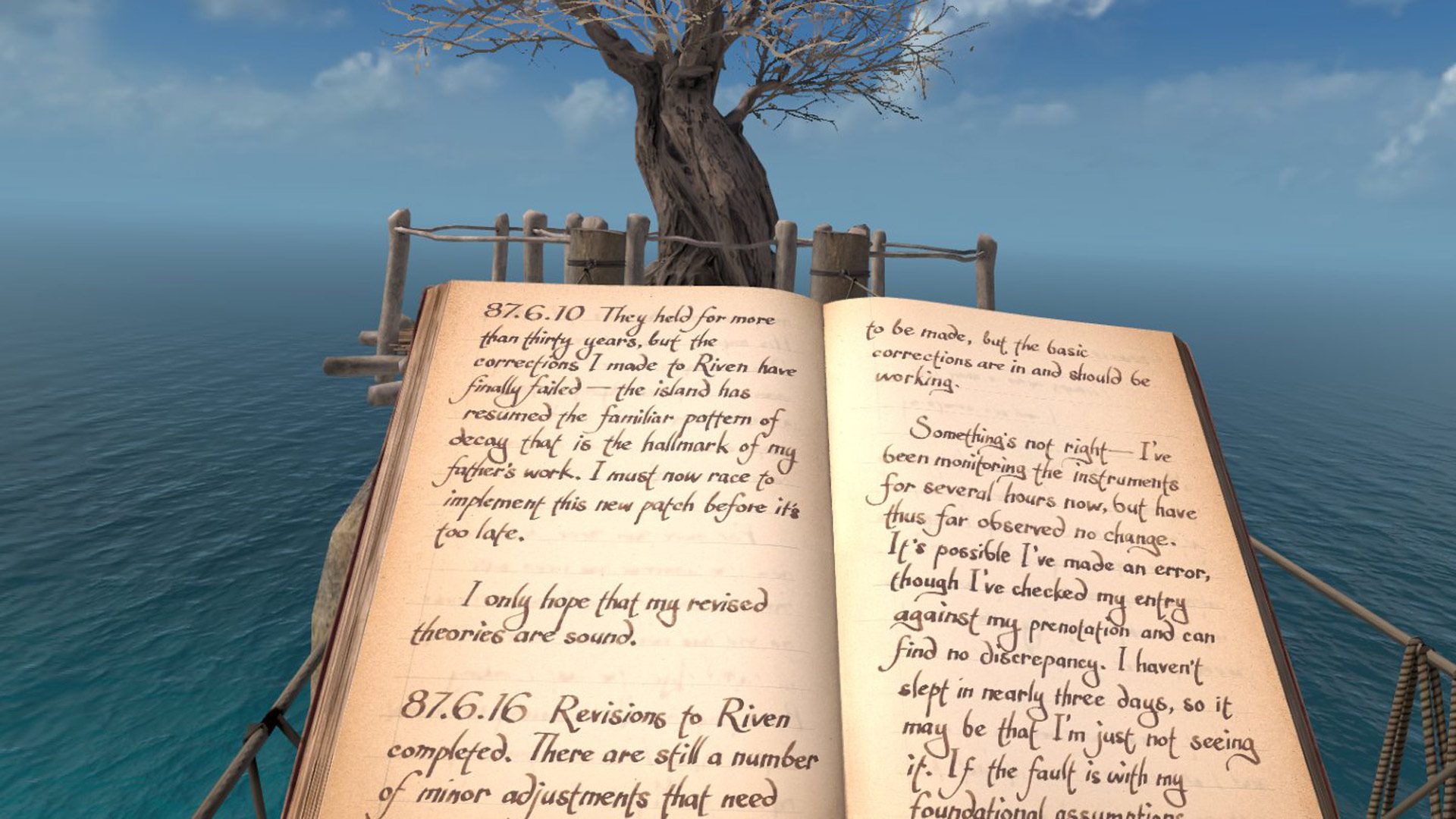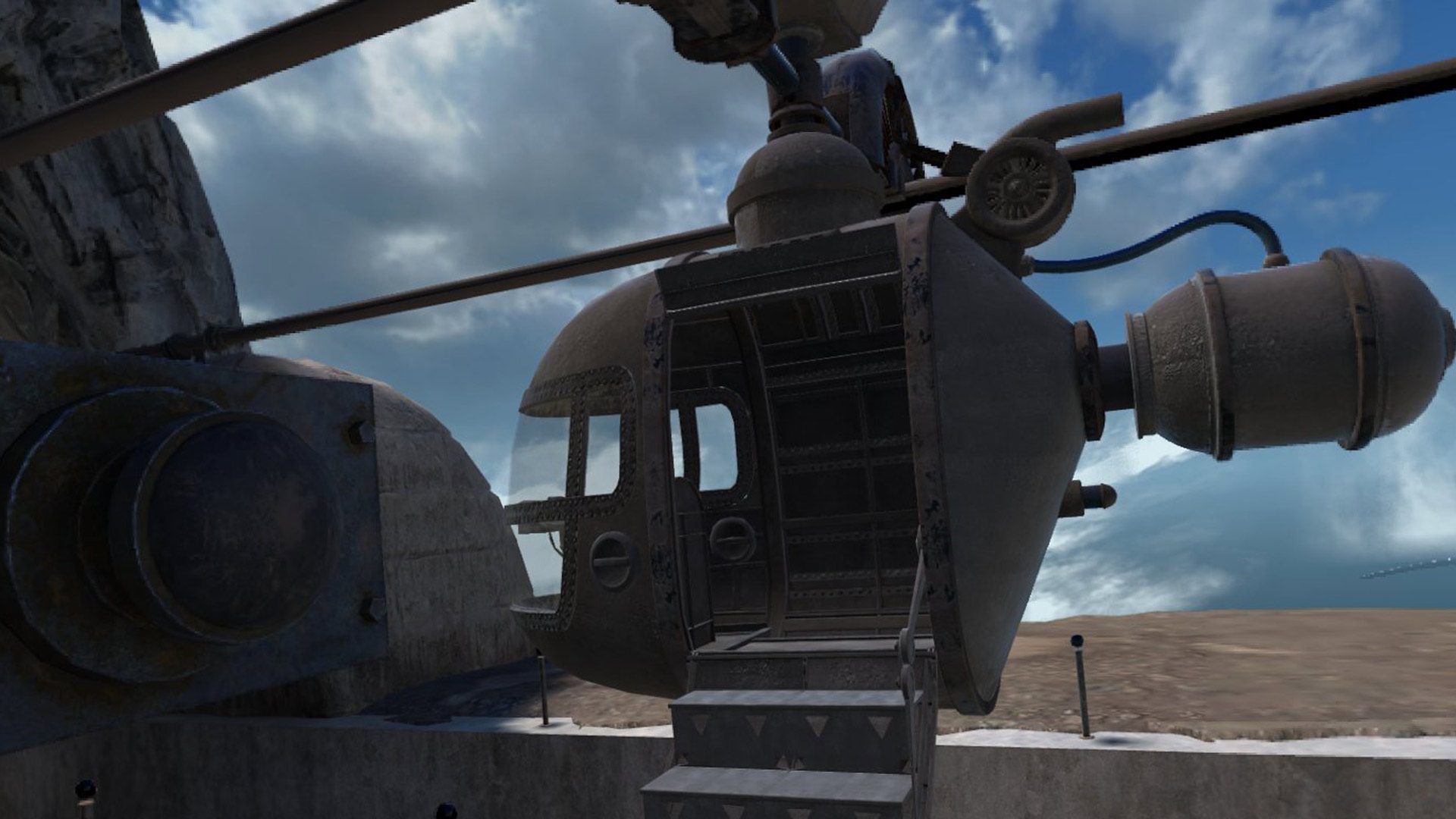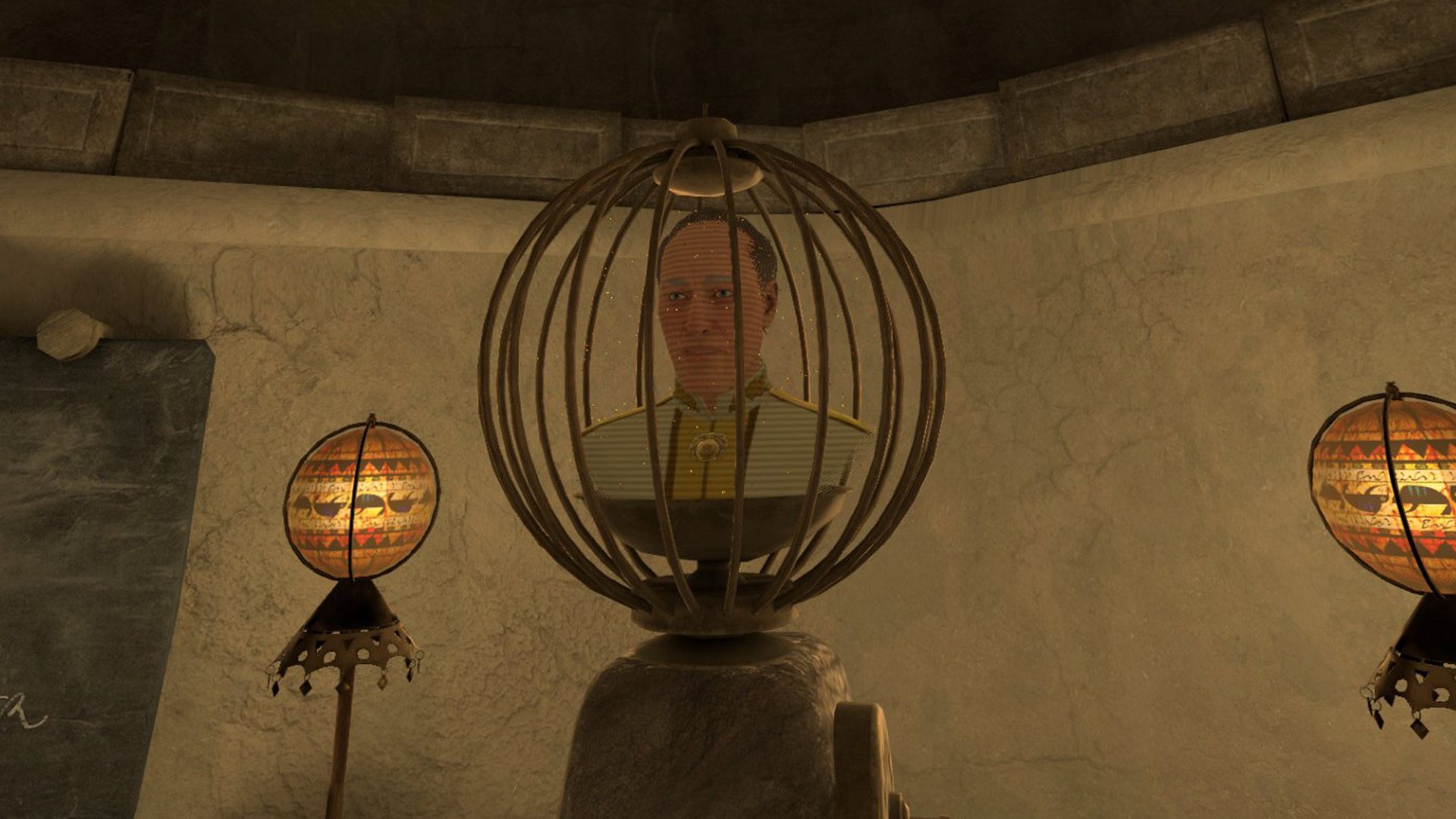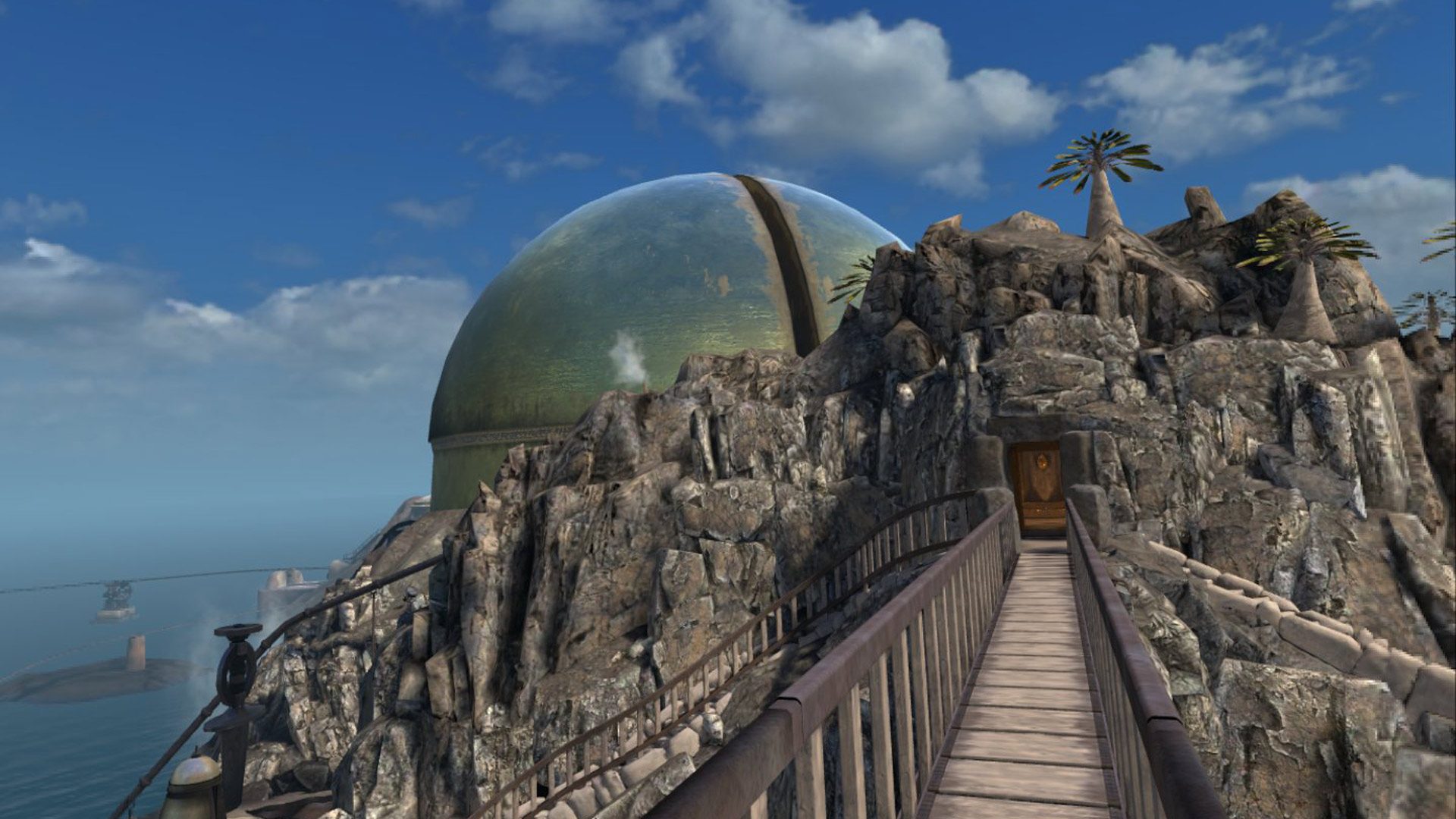RIVEN (1997), the sequel to iconic point-and-click puzzle-adventure MYST (1993), just got the VR treatment in its new remake. Unlike Myst, which felt a little too game-y and obtuse at times, Riven plays a lot more like a modern title, which thanks to Quest and SteamVR support, is true in every sense of the word now. Granted, you’ll need to look past some VR implementation issues which keep it from feeling like a ground-up VR native, although however you play, you’ll be exploring a fascinating world that’s both puzzle-dense and undeniably beautiful at every turn.
RIVEN Details:
Available On: Quest 2/3, SteamVR
Reviewed On: Quest 3, Quest 3 via Link
Release Date: June 25th, 2024
Price: $35
Developer: Cyan Worlds
Gameplay
I know Riven pretty well by now, having shuffled my way around its five PlayStation 1 discs a number of times as a kid. This is the first time popping back in as an adult though, so I kind of get the chance to not only relive a bit of the past, but rediscover puzzles long forgotten, this time in the immersive first-person view of a VR headset.
While I really can’t stop nostalgia coloring some of my experience with the new 3D-rendered Riven, I’ve spent enough time in VR to know where things fit on the VR-port-continuum. Some games feel unnecessarily forced into working with VR, some are indistinguishable from VR-natives, and somewhere in the middle are great games that still feel like ports, but that’s okay because they bring enough to the table on their own. That’s where Riven sits—great game that works pretty ok in VR.
If you’re playing it for the first time, you’re in for a patently Cyan experience of deciphering codes, shuffling puzzle pieces around, and visiting (and possibly re-re-revisiting) places, doors, and enigmatic set pieces to figure out the world around you. That’s reason enough to play if you’ve never had the chance. Riven’s puzzle can be tough for the uninitiated, but ultimately more rewarding than Myst thanks to its heaps of environmental storytelling that feels less formulaic, and a lot more organic. More on that in the Immersion section.
If you have played before though, many of the game’s puzzles and gadgets are slightly modified from the originals, likely due to the spatial nature of real-time 3D graphics as opposed to the single-frame point-and-click original, which was much more static in how its presented interactive elements. A 27-year-old walkthrough guide that works with the original may still be useful to help with the broad strokes, but you’ll definitely notice differences here and there, with some puzzle elements simplified, or complicated in new ways separate from the original.
One thing that hasn’t changed is there’s still a ton of walking and looping around to do, which is just a feature of the game due to its wide and varied puzzles. You’ll spend a good amount of time circumnavigating one of the game’s five islands for the umpteenth time turn on a thing, to return to a puzzle across the map to see what it did. Then again, that’s just the old school charm and hands-off approach Riven brings to the table.

Not only that, but the old school approach to game design makes you rely upon your own spatial memory. There are no map markers, signs, or ‘helpful’ NPCs to guide your way—an aspect of the game that still makes it one of my favorite experiences.
And unlike Myst, you can go a pretty impressive distance through the game with only a few hard roadblocks to stop you, making progression feel very natural. Then again, Riven is beloved for being more organic in level design, and less formulaic than Myst overall, feeling much less like of a jumble of toys, and more like Cyan’s modern titles Obduction (2016) and Firmament (2023).

Knowing Riven’s past, I shouldn’t really complain about loading times—they’re certainly faster than shuffling through a broken jewel case filled with PS1 discs—however on Quest you’ll be sitting there for a while waiting for levels to load, the longest of which is the initial startup screen which the game warns “could take a few minutes” to do (it does). From there, whether on Quest or SteamVR, vehicle transitions will constantly toss out 10-second loading screens, which doesn’t sound like much, but happen on both sides of transfers between islands.
Another niggle: there’s no practical way to write down notes so you can remember clues or sketch out solutions, which is precisely what you’ll need to do to decode stuff. You can take a screenshot with the game’s built-in camera system, and that’s about it. I just wish there was a spatial pencil so I could annotate found letters, or somehow keep myself from taking off the headset to write stuff down.
Immersion
I had a chance to play both on Quest 3 natively and PC VR versions. Here’s the breakdown between the two, which most anyone can guess.
On the Quest version you’ll notice a ton of low-res textures and geometry that dynamically chunk-loads into place the closer you get to it. Once things are in place though, at times Riven can be one of the prettiest games on the Quest platform. That’s if there aren’t any NPCs around, which are bloated and a little too cartoony for the game’s lush, natural environment.

It also seems Cyan is throwing the entire toolbox of Quest performance tricks at you at all times, including what feels like always-on asynchronous spacewarp and glaringly obvious fixed foveated rendering.
Since it was primarily developed for the flatscreen PC crowd, the PC VR version is a fair bit ahead of the Quest 3 native in terms of visuals. Even on ‘Epic’ settings though, you’re bound to notice some oddly applied shaders that make shadows dance about and move when they shouldn’t, and also discrepancies in how shaders work in both eyes, leading to some pretty visible mismatches in shadows and lighting. Still. chunk-loading of areas is mostly minimal and textures are fairly high, making it rightfully a more graphically intense version of the game.
Like Myst, Riven suffers from middling object interaction, which is a shame considering how many items are strewn about in the game. Oftentimes I’d find myself trying to interact with something, only to find out I wasn’t pressing it correctly, or it wasn’t interactive at all in the first place, making it more of a guessing game than it should be. Here’s me fruitlessly grasping at a weird banana-kiwi thing, then trying to grab a strangely unusable pencil on the same table. Again, I wish I could use that damn pencil.
There is a physical inventory though where you can keep the various books you collect throughout the game, although you can’t use it for anything else.
Whether you’re on Quest or SteamVR, something that never fails to impress is coming to a precipice or turning a bend to find a new, breathtaking scene in front of you. Riven is all about natural beauty, punctuated with megalithic structures that don’t feel nearly as abandoned and lonely as Myst did.
There’s wildlife, sprawling villages, shrines, and plenty of environmental storytelling here to dig into, putting exploration at the forefront. There’s even inhabitants in the world, albeit too skittish to interact with such an obvious outsider.
Comfort
Riven features the full gamut of comfort options in addition to some quality of life options that make things a little easier, but likely less immersive as a result. Traveling between islands is always done on some sort of vehicle, which can be a little jarring for some since it’s fast and a bit jerky.
You can turn vehicles transitions off entirely though, essentially letting you jump right to the next island’s rail station, or put in the option to make windows dirty, which helps ground you a little more in the vehicle’s cockpit. The game also offers similar options for instant traversal of stairs and ladders, which otherwise a manually climbable.
Check out the full comfort checklist below:
‘RIVEN’ Comfort Settings – June 25th, 2024 |
|
Turning |
|
| Artificial turning | |
| Snap-turn | ✔ |
| Quick-turn | ✖ |
| Smooth-turn | ✔ |
Movement |
|
| Artificial movement | |
| Teleport-move | ✔ |
| Dash-move | ✖ |
| Smooth-move | ✔ |
| Blinders | ✔ |
| Head-based | ✔ |
| Controller-based | ✔ |
| Swappable movement hand | ✔ |
Posture |
|
| Standing mode | ✔ |
| Seated mode | ✔ |
| Artificial crouch | ✖ |
| Real crouch | ✔ |
Accessibility |
|
| Subtitles | |
| Languages |
English, French, Italian, German, Japanese, Korean, Polish, Portuguese, Russian, Simplified Chinese, Spanish |
| Dialogue audio | |
| Languages | English |
| Adjustable difficulty | ✖ |
| Two hands required | ✖ |
| Real crouch required | ✖ |
| Hearing required | ✖ |
| Adjustable player height | ✔ |

